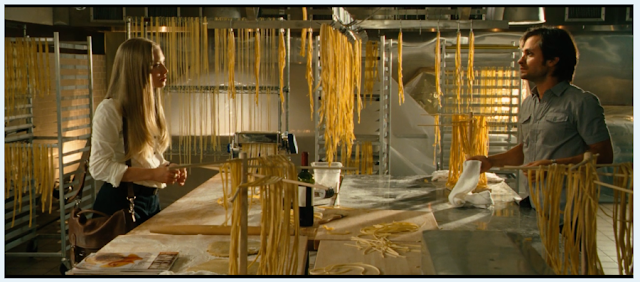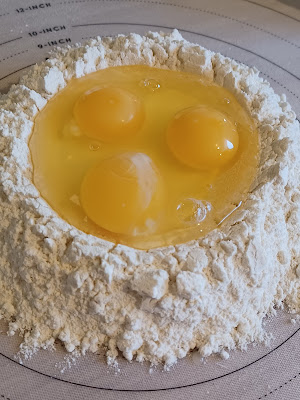This month I am hosting the #MoviesandMunchies group as we watch Letters to Juliet. You can read my invitation here which includes a brief plot summary. It's really not that much more complicated than that, but it is enjoyable. At least I found it enjoyable! You can read the Risotto all'Amarone that I have already shared this month. Stay tuned for more. I always find movies set in Italy a culinary inspiration.
from imdb.com
There is a scene in the kitchen of Victor's soon-to-open restaurant when he gushes that he has reinvented the noodle. He keep breaking off pieces and making Sophie taste his "inventions." Ha. The ridiculousness of a person reinventing the noodle stuck with me. I mean, I have a hard time believing that Italian nonne haven't made every possible iteration of a noodle.
So, I am just going to share my favorite standard: hand-rolled noodles. I do switch it up by the kind of salt that I use, but why change something that is already fabulous?
We make a lot of noodles, including: Gluten-Free Rombi; Hand-Rolled, Hand-Cut Spinach Papardelle; and Maltagliati . Though homemade pasta takes a little bit of technique, it requires very few ingredients.
Ingredients makes 4 to 6 servings
Dough
- 2 cups pasta flour plus more for dusting
- 3 eggs
- 1/2 teaspoon salt
- 2 Tablespoons olive oil
- Also needed: plastic wrap, rolling pin, pasta drying rack (optional
Procedure
Dough
Place flour in a heap on a clean workspace. Use a measuring cup or just create a hollow in the flour.
Break eggs into the hollow. Sprinkle in the salt. Use a fork to incorporate the eggs into the flour. Add in the olive oil. Knead into a smooth dough, approximately 8 to 10 minutes. Wrap the dough ball in plastic wrap and let rest for 30 minutes.
To roll: Slice your dough ball into quarters. Cover the portions you aren't rolling. Turn the rested dough out onto a lightly dusted board and roll out as thinly as you can. I found that rolling it into a long rectangle make the most even strips. If you don't have a rolling pin, a wine bottle works well!
Once the pasta dough is as thin as you can get it, starting at one (short) end of the rectangle, roll the dough into a cylinder.
With a sharp knife, hand cut the roll into pieces whose width is the width you want for your pasta. I went about the width of linguine. Carefully unroll the strips and you're all set.
You can hang them to dry a little bit before cooking. We usually just hang them to get them off the counter.










Comments
Post a Comment